Ancient Kourion used to be a city-state in ancient Greece. It is located in the southern part of Cyprus near Limassol in the British Overseas Territory of Akrotiri and Dhekelia.
In the next chapters, you will find more about its surroundings, individual sites to explore in person as well as information on how to get there.
Transportation
The best way how to explore not only Kourion but maybe the whole of Cyprus is by car. There is also a bus service on the island as well as in the cities and their surroundings. The problem with them is the timetables. The timetables only show the times of departures from the starting point.
In the case of Ancient Kourion, you can take bus number 33 (that one stops at the Kolossi Castle too), 16, or 16b from the EMEL bus station Leontiou to Kourion Beach. The journey should take approximately 45-50 minutes. You need to get off at the Agios Ermogenis 2 bus stop. There is a small church nearby.
Agios Ermogenis
An ancient church built of stone dedicated to Saint Ermogenis. The ruler of Samos tortured Saint Ermogenis, a faithful Christian, for his religion until he renounced Christianity, and an ancient church built of stone was dedicated to him. After his death, someone threw his corpse into the river, and it ended up near the Kourion shores. People who found him there established the temple that was destroyed in the 17th century. Many Christians come to this place on the 5th of October when a festival happens to celebrate Saint Ermogenis.

Unfortunately, I do not remember if it was open (early September) but there is quite a big parking lot with a restaurant too. Right on the left of the church is a road that will take you to the Ancient Kourion. The road is a little bit steep, or it can feel that way especially when you are there during a very hot day.
When you go up the road and enter another one, you will discover some ancient tombs present within the Kourion plateau.
Historical Insights
The history of Kourion dates back over 4000 years when it was founded in the 13th century BCE. The place has a very tough history full of prosperous periods followed by declines. There were a couple of different influences, and changes, as well as invasions or even natural disasters.
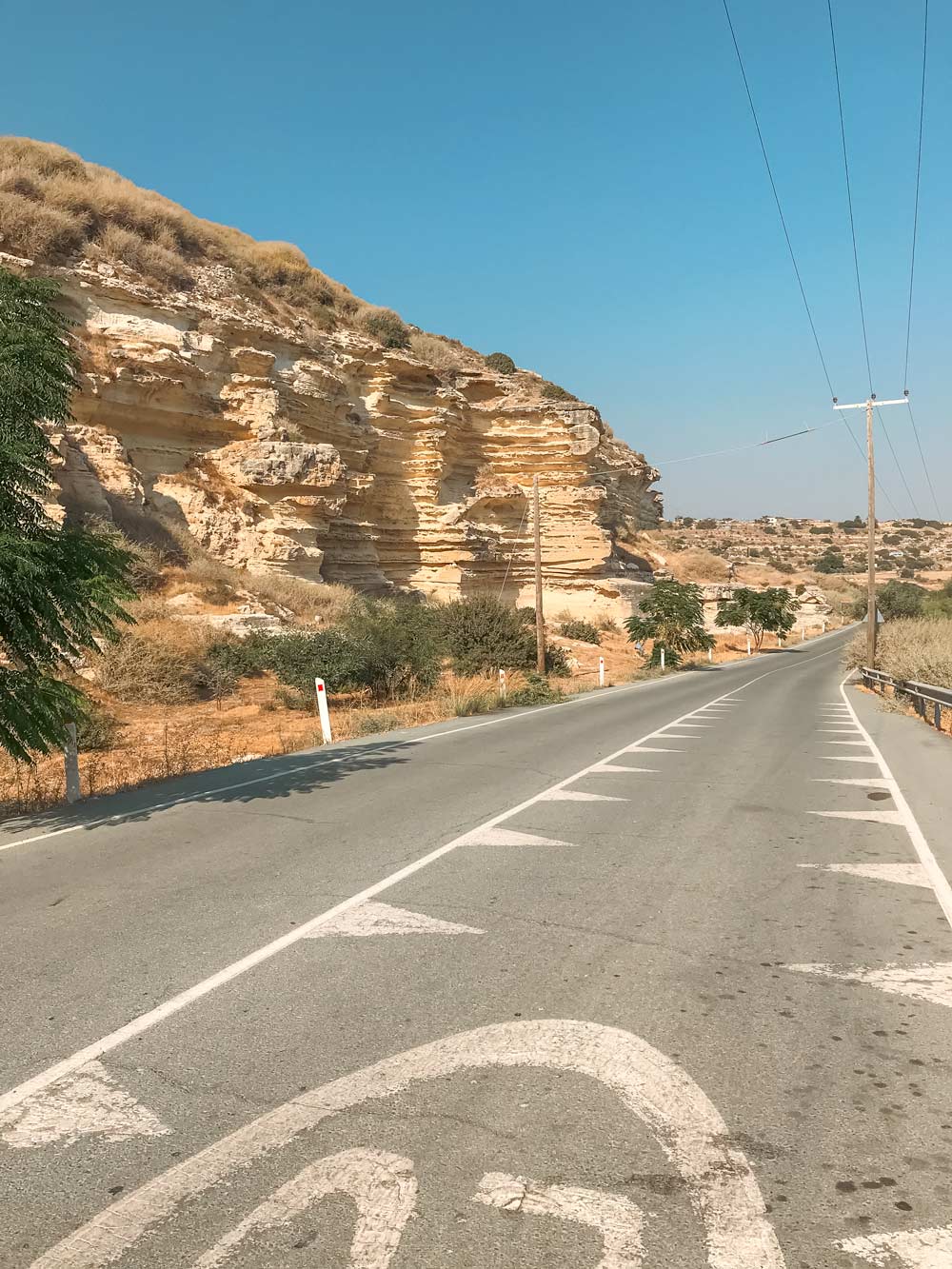
It used to play a significant role in the ancient kingdoms of Cyprus. Later during the Persian rule in the 6th century, the place became the center of trade and culture. For some time even Alexander the Great was its ruler.
Probably the best times for Kourion were when the Romans came (1st century BCE) and established public buildings and infrastructure. Later in the 4th century CE Kourion became an important center for Christians.
The decline period of Kourion began in the 7th century, marked by Arab invasions and a subsequent shift in population. This led to the abandonment of the city-state, and its ruins were revealed in the 20th century.
Inside the Kourion city
The admission inside the site is 4.50 EUR. You will probably need at least 2 hours or even more in case you want the see the whole site including The Sanctuary of Apollo Hylates which is approximately 30 min away from the House of Gladadiators. There are many tables with written information about each spot you are going to come across.
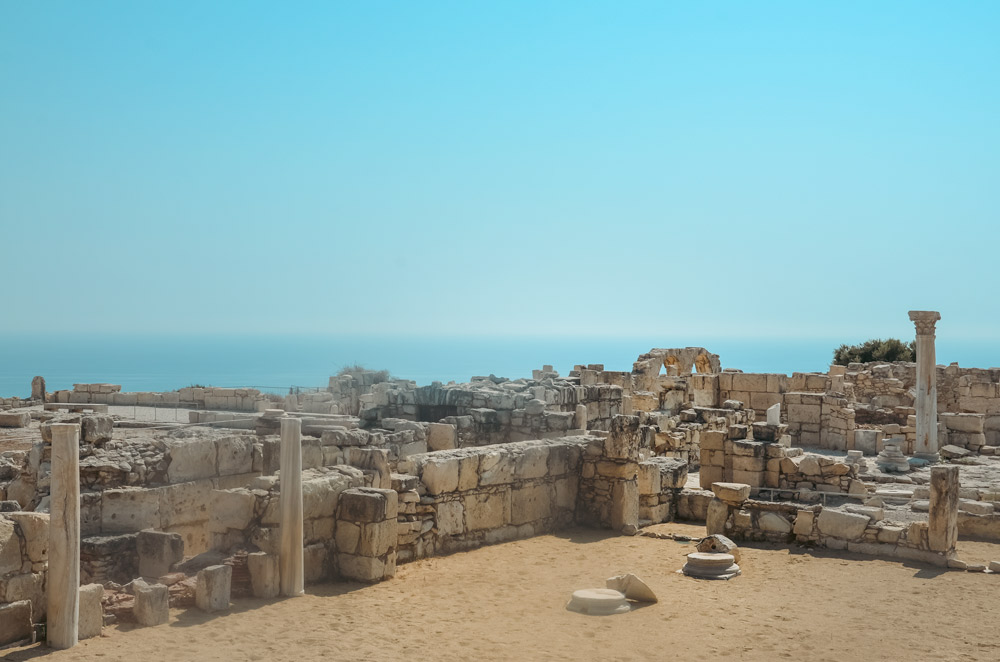
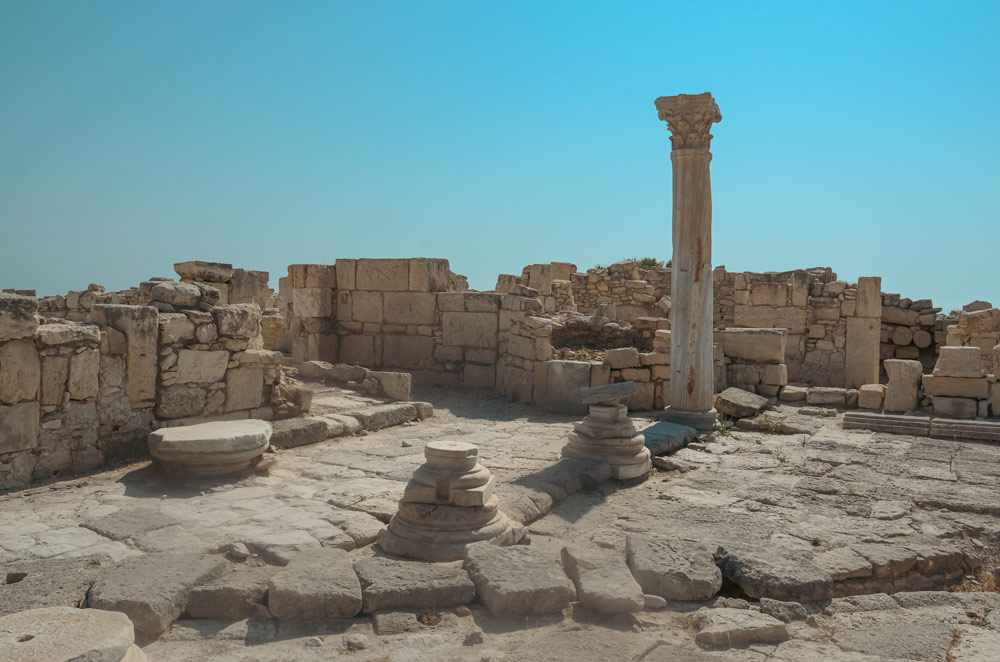
Important points of interest
Ancient Amphitheater
The most striking and imposing feature of Kourion is located near the visitor center, where the grand amphitheater stands. This impressive structure could accommodate approximately 3500 spectators, showcasing the city’s vibrant cultural life in ancient times. Today, the amphitheater continues to serve as a venue for various cultural events, with modern lighting equipment enhancing the atmosphere and bringing the ancient site to life for contemporary audiences.
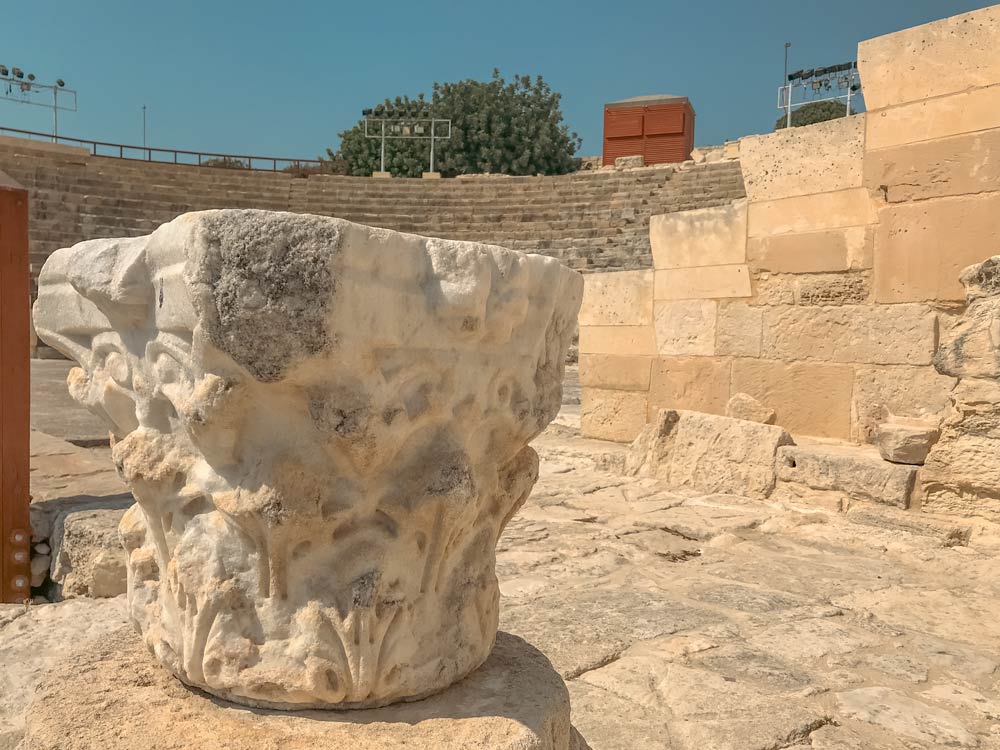
House of Eustolios
A well-preserved Roman villa with many mosaic floors, frescoes, and intricate designs. The mosaics illustrate mythological scenes, pastoral motifs, or geometric patterns.
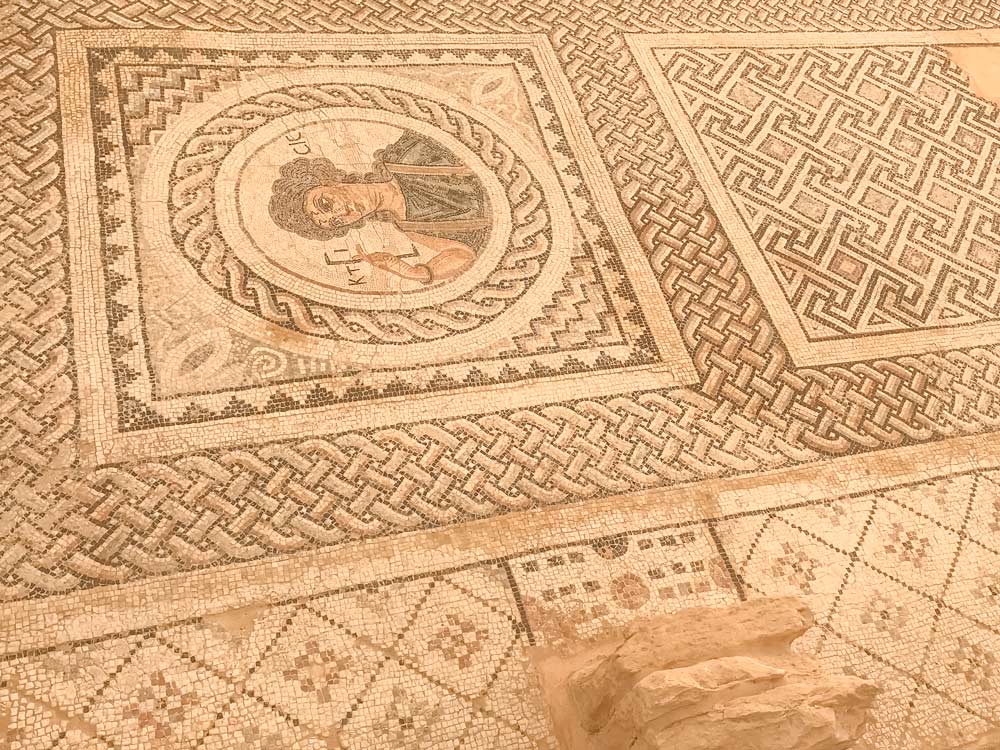
Agora
The place where ancient people have their central marketplace and civil hub for socializing. There are two marble columns on both sides.
Early Christian Basilica
The sign of Kourion transforming from its pagan origins to Christianity. You can observe architectural elements like layout, apse, narthex, or the baptismal font. When it was destroyed in the 7th century many of its mural marble pieces were used to build the pavement for a new church in nearby village Episkopi.
Nymphaeum of Kourion
A monumental fountain and shrine dedicated to the nymphs. Nymphaea were pretty common in ancient cities functioning as both practical and religious spots.
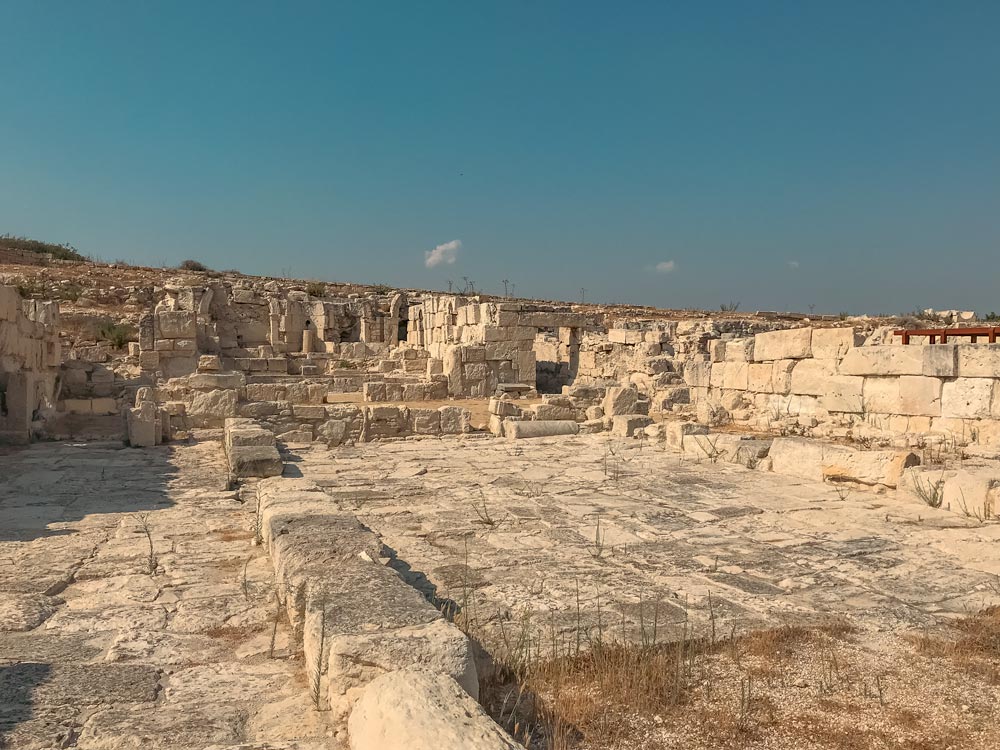
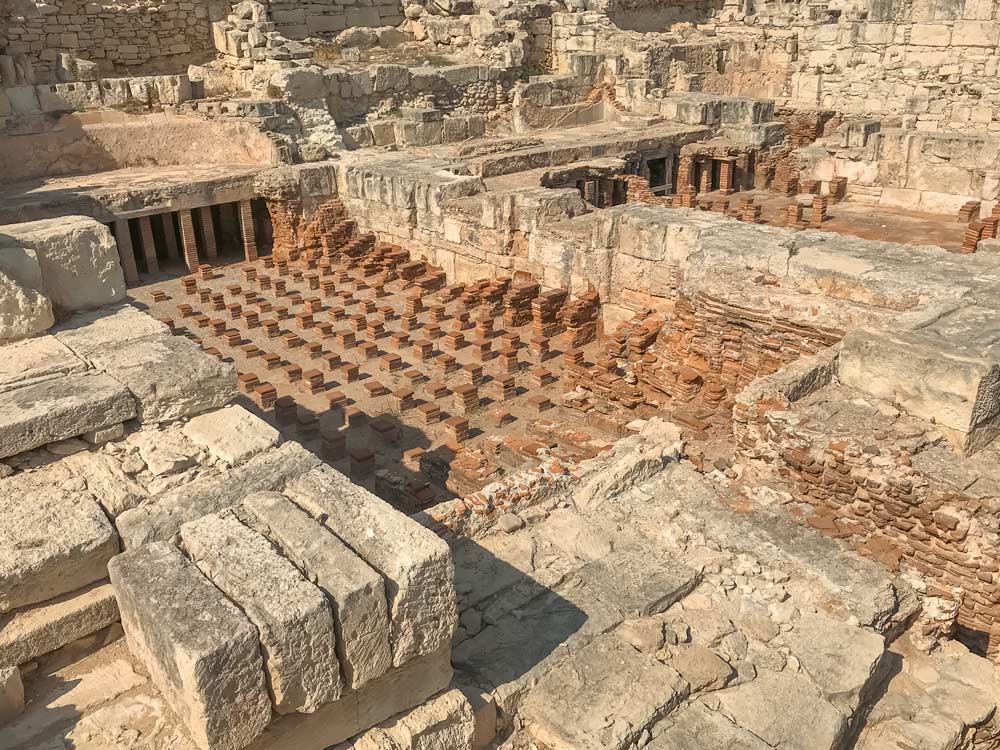
House of the Gladiators
The house consists of a central courtyard, corridors, and rooms. There are also many mosaics on the east and the west sides. Some of them depict Gladiator combat scenes.
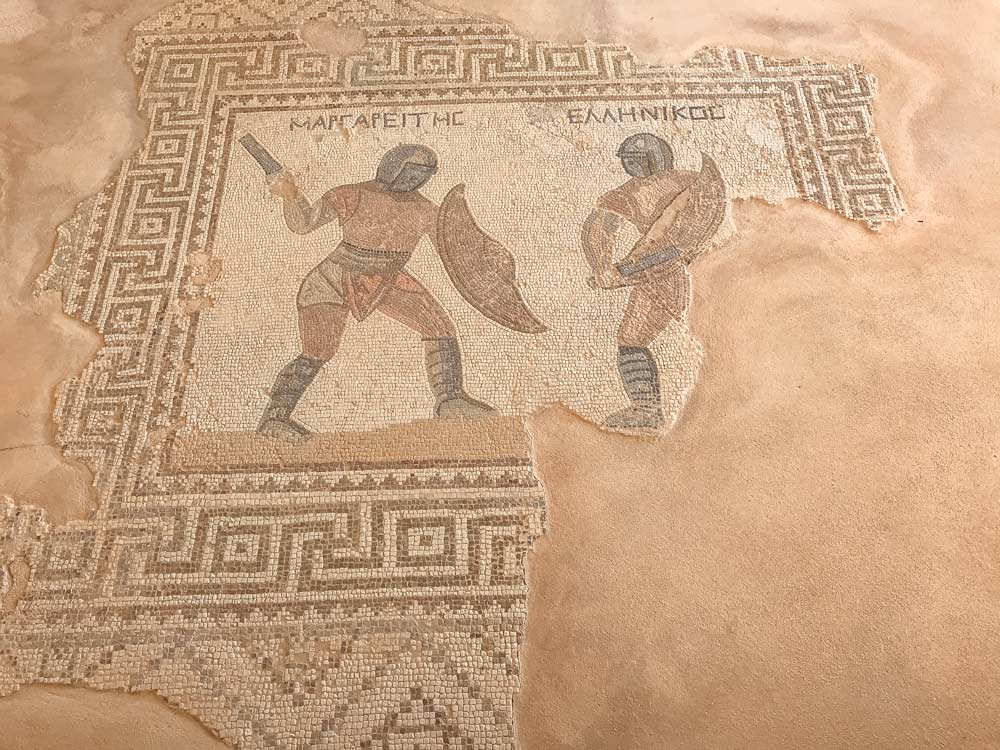
House of Achilles
This one lies near the Lemesos-Pafos road. It is a villa with a central court, some rooms, and mosaic floors.
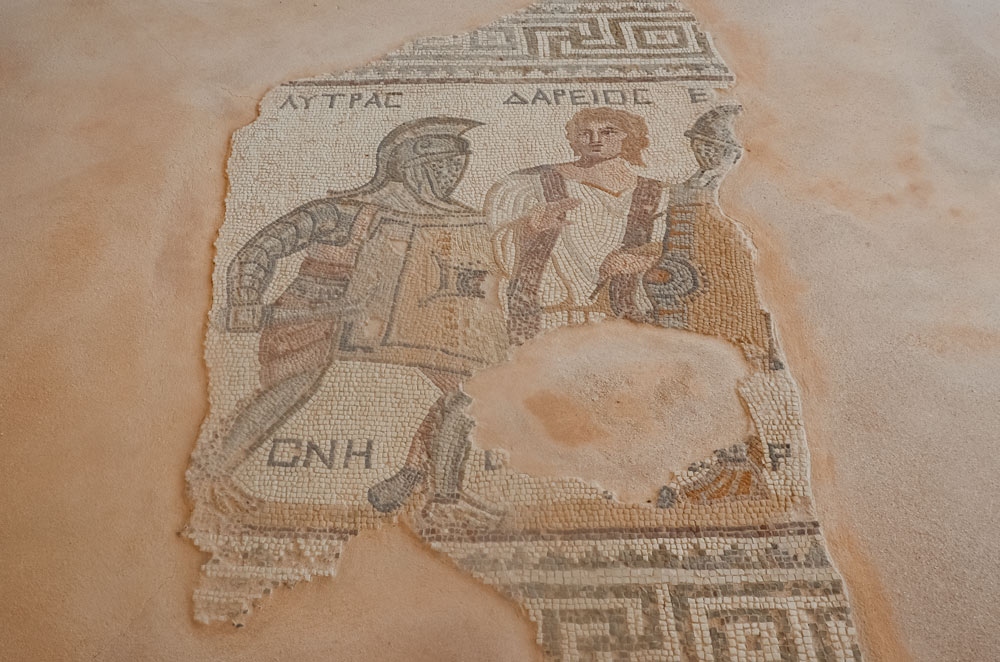
Earthquake House
Kourion used to undergo many earthquakes in the past and this place has remains of structures with evidence of such natural disasters that happened in 365-370.
The Stadium
It is U-shaped and in times of its glory, it could host approximately 6000 spectators. The Stadium is located to the east of the Apollo Hylates.
Sanctuary of Apollo Hylates
The site offers plenty of information tables that provide the visitor with all the important insights into its history. The site is 2.5 km away from ancient Kourion’s main points of interest. As the name suggests it was a place where the god Apollo was worshipped as the god of the woodlands. Originally the place was made of a temple, Archaic Altar, Precinct, and circular monument.
Other parts
On the route next to Earthquake House when heading towards the Apollo Hylates you will find another interesting spot that lies near the cliff and offers a spectacular view of the Kourion beach and nearby Zapalo Bay. All set in the ancient stone white columns and arches.
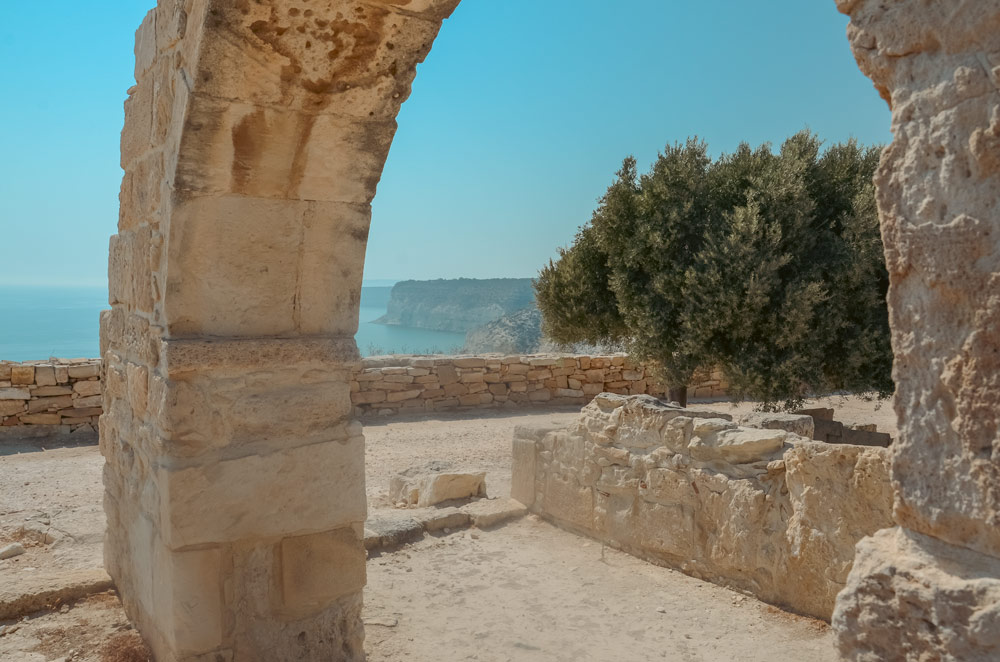
What to do around
You can visit the nearby local sandy beaches with some pebbles like the Kourion, or the Agios Ermogenis. There is plenty of parking lot space, some restaurants, and not many people.
Another option is to head towards Zapalo Bay and do a short hike when you are at the Sanctuary of Apollo Hylates. There are beautiful cliffs with great views and when you go down to the coast and shores you will find the Zapalo beach. It gives some remote island vibes. The waters are very clear, with soft sand shores and some local birds singing.

On your way back to Limassol you can visit the Cyprus Wine Museum with a ticket fee of 15-16 EUR. It is open daily except Sunday from 10 am until 5 pm. You can opt for one of 3 tours, one including wine tasting.
Nearby – 30 min walk or 5 min car drive – is the Kolossi Castle. The admission fee is 2.50 EUR. Many signs will guide you and help you learn more about its rich history. Also, a Coffee shop with a parking area is available too.
If you are interested more in the archeology of Cyprus, you can check Paphos and visit the Tombs of the Kings, or the Nea Pafos archeological site.
Sources:
allaboutlimassol.com
culture.gov.cy